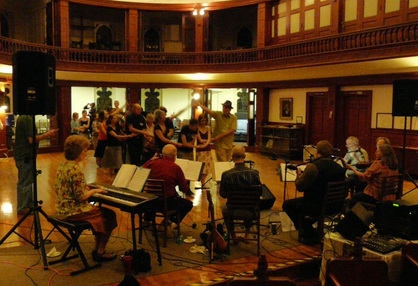Contra dance is a traditional form of dance done in long lines of people facing each other. The term is the English equivalent of the French contredanse, with contre meaning “against” or “opposite.” Contra dance dates back to the 18th century in Britain, France, and North America. George and Martha Washington and Thomas Jefferson were enthusiastic dancers.
The dances, which are all named, combine common figures — circle right/left, swing your partner, dos-a-dos, allemande, ladies’ chain, promenade, etc. At the start of each individual dance, the caller names the dance and walks the dancers through the sequence of figures. When the dance starts, the band starts playing and the caller calls the figures. While the tradition of dancing goes back three hundred years, many of the dances themselves are the creations of dancers, callers, and musicians today.
If contra dancing is new to you, follow the links ... for our own Rosalind Clark at Ignite Michiana
... for an excellent video of contra dancing by photographer Doug Plummer
... and for another at the contra dance in Glen Echo, Maryland.
The dances, which are all named, combine common figures — circle right/left, swing your partner, dos-a-dos, allemande, ladies’ chain, promenade, etc. At the start of each individual dance, the caller names the dance and walks the dancers through the sequence of figures. When the dance starts, the band starts playing and the caller calls the figures. While the tradition of dancing goes back three hundred years, many of the dances themselves are the creations of dancers, callers, and musicians today.
If contra dancing is new to you, follow the links ... for our own Rosalind Clark at Ignite Michiana
... for an excellent video of contra dancing by photographer Doug Plummer
... and for another at the contra dance in Glen Echo, Maryland.

